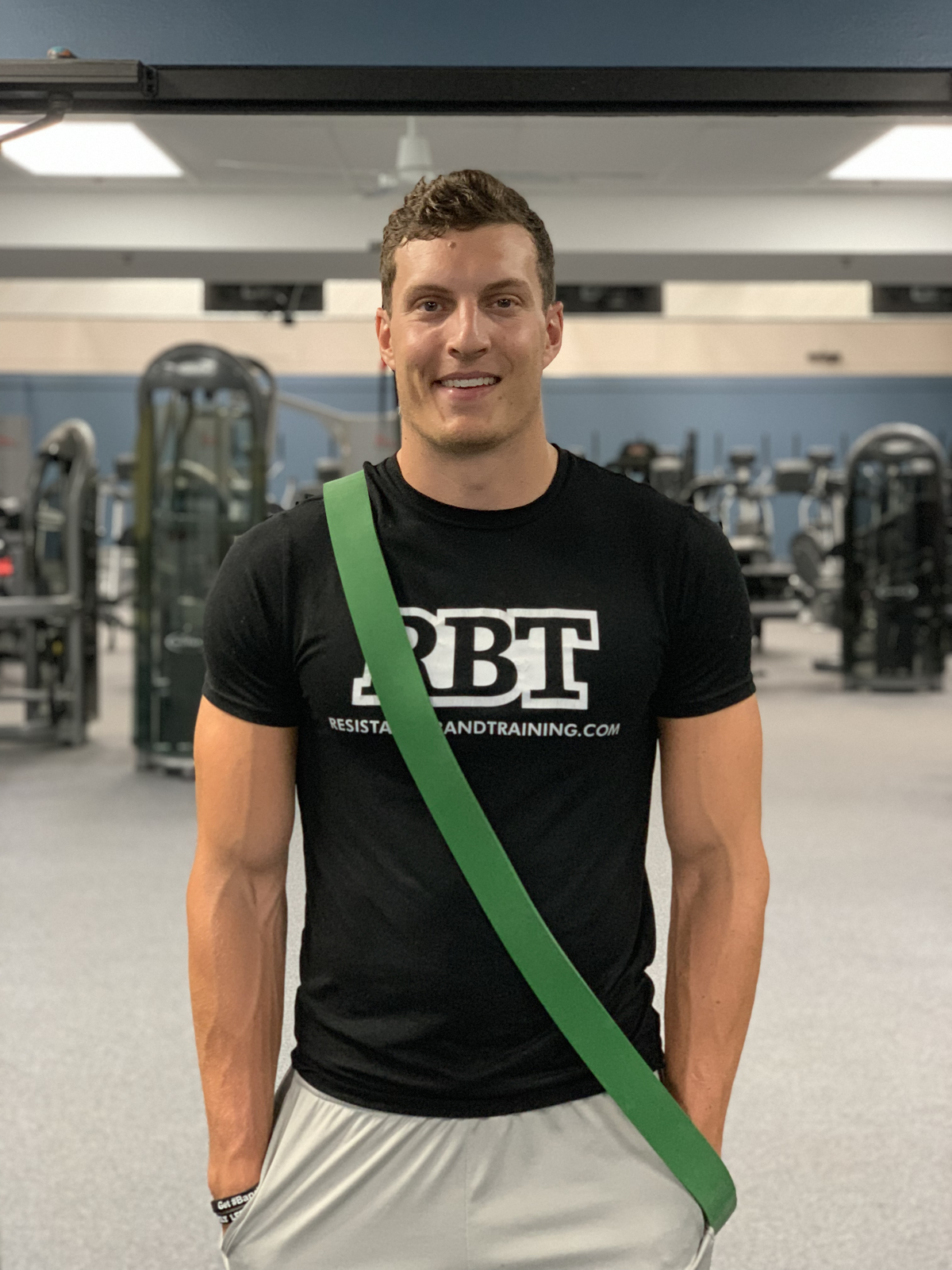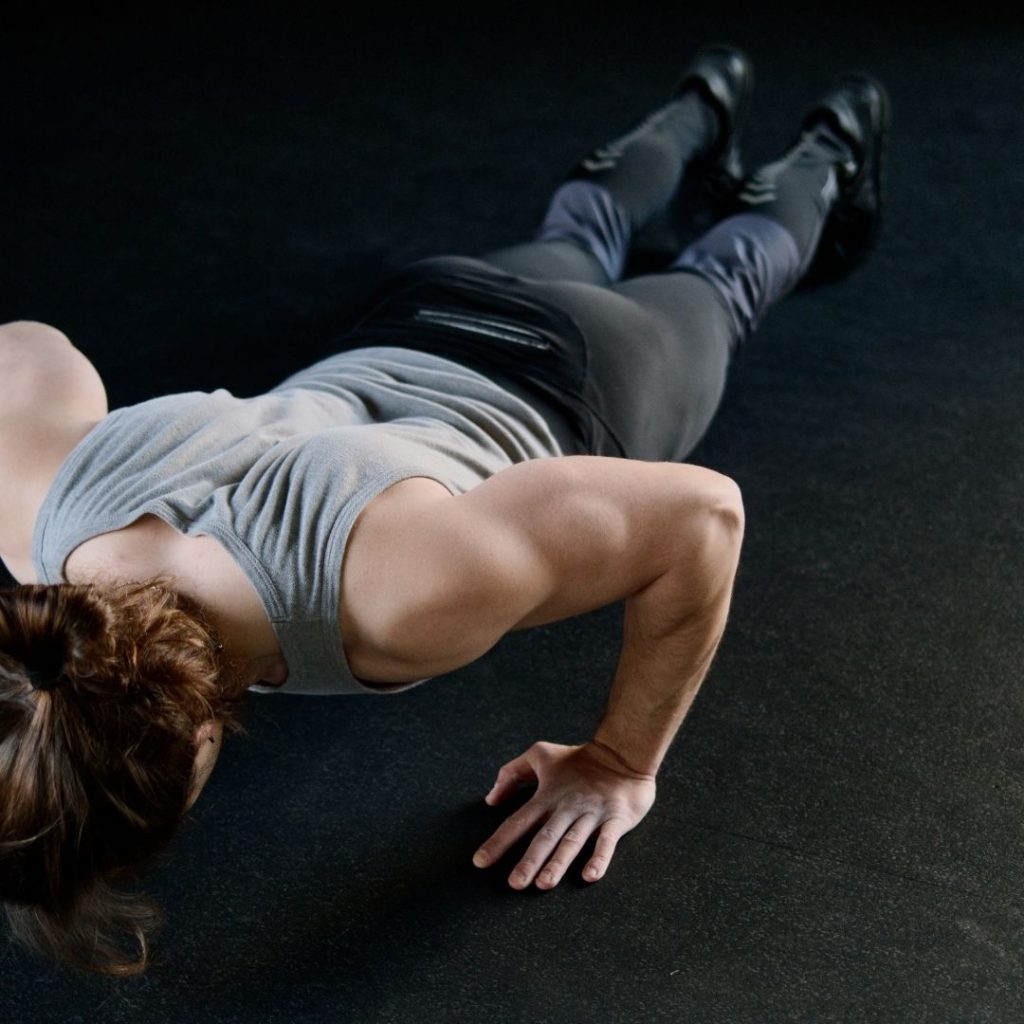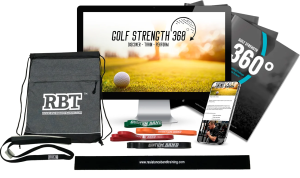How would you describe the ideal athlete?
Would she be tall? Muscular? Strong?
Would he have a 6 pack?
Would she be able to jump high and run fast?
What sport does he/she play?
What position?
.
.
.
These questions are nearly impossible to answer.
The ideal athlete is extremely context dependent.
Phil Mickelson just won the PGA Championship awhile back. What would happen if you put him at cornerback lined up across from Devante Adams?
Yuka Saso just won the US Women’s Open a few weeks ago. What would happen if she tried to guard Breanna Stewart on the basketball court?
.
.
.
Even if we just look at the sport of golf and ask, what do the best golfers’ athletic profiles look like?
Dustin Johnson is very different from Colin Morikawa.
Rickie is different from Rory.
Compare Phil and Tiger from 15 years ago… Very different athletic builds.
But yet, these are all very successful golfers.
.
.
.
The reason I make all of these distinctions is because I want you to understand that when I say, “Train like an Athlete,” that doesn’t mean you, as a golfer, should be training like a middle linebacker, UFC Fighter, or starting MLB Pitcher.
Furthermore, every athlete has a surrounding context that affects their ideal method of training.
Your training experience, injury history, sport, position, goals, movement assessment results, (yada yada) all create differences in the athletic context that surrounds YOU.
Very rarely should a coach jam the athlete into the mold of their training. Instead mold the training to fit the athlete.
Now, that being said, training will have many underlying commonalities amongst differing sports. As a golfer, your training will look similar to others within the sport due to the fact that they play the same sport, complete very similar movements, and have similar goals (I don’t really know a golfer who doesn’t want to play better, healthier, and longer).
At the end of the day if you are training and treating yourself like the athlete you are, you’re on the right track!
.
.
.
What is an Athlete?
An athlete is somebody who uses their physical abilities in a competitive manner.
If you golf, if you keep score, if you AT ALL care about what your scorecard says at the end of the round, or where your next tee shot goes, or avoiding the water on 7… YOU ARE AN ATHLETE.
Boom, glad that’s settled.
.
.
.
How Can YOU Train Like an Athlete?
Quick Overview of the Rest of the Article:
There are three central themes that we need to discuss when attempting to train like an athlete…
- Athlete Mentality – How should you be viewing your physical training in order to produce results like an athlete? Long story short, training needs to be come a priority.
- Athlete Physical Development – 5 Things Your Training NEEDS to have in order to build the athlete within you.
- Athlete Holistic Development – Never forget about the surrounding lifestyle and health habits that you maintain. Would the best athletes in the world fail to prioritize nutrition, sleep, or hydration… of course not… and neither can you!
.
.
.
Athlete Mentality
While all athletes attack their sports with slightly different emotions and mental states, nearly all successful ones make their training a PRIORITY.
The harder I work, the luckier I get – Gary Player
Athletes understand the role that physical development, practice, and strength training has on their success in the sport, and they make sure to prioritize it.
And while, I understand you aren’t playing golf this weekend for $1.5 mil, nor does your livelihood depend on your athletic abilities, if you golf, you are an athlete (we went over this). Treat yourself like one!
Nearly ALL golfers (pros and amateurs alike) share a relentless spirit and hunger to improve their games. It’s what makes the game so great! If you share this drive, ask yourself, are you doing everything in your power to improve your game?
Are you maintaining an athlete’s mentality when it comes to prioritizing your training needs?
If you are reading this, I am guessing you already train pretty regularly and share in my spirit of training and physical development, so I won’t beat on the point.
But, to summarize, if you truly consider yourself a golfer, an athlete or even simply an individual who seeks improvement, training needs to be prioritized and given the proper importance, like your livelihood depends on it, like you are playing for $1.5 mil this weekend… I wish…
.
.
.
Athlete Physical Development
So, what should our training look like if we are seeking to move and feel like an athlete. Let’s break it down into 5 parts, simply because I like organization.
- Train fast (and I mean FAST, like, explosively fast).
- Train strong.
- Train mobile and stabile
- Train to boost coordination.
- Train to expand your MOVEMENT CAPACITY.
.
.
.
Train FAST
Not only should we train fast because the golf swing is fast, but doing so prepares our body’s for what life throws at it.
I believe many injuries in our world occur due to a lack of preparation.
A muscle isn’t prepared to contract or elongate at a certain velocity, so it strains.
A joint isn’t prepared for a certain dynamic load, so a different joint compensates.
Our nervous system isn’t upregulated to perform a high intensity action, so we’re inefficient and ineffective.
By training fast we can help build this preparation. We will tap into high threshold motor units as well as increase their firing rates. We will build neuromuscular effeciency and increase our muscle fiber shortening speed. We will become more powerful and faster – and our clubhead speed will increase as a result!
By training FAST, we not only can enhance our athletic potential to perform an action, but we can also physically and neurologically expose ourselves to intensities that we will see elsewhere – building injury resilience!
Here are 5 ways to train fast (placed in the order of increasing intensity and impact)!
- Assisted Jumps
- Squat Jumps
- Lunge Jumps
- Medicine Ball Throws/Slams
- Sprinting (no video here, but I think it’s straightforward)
.
.
.
Train STRONG
In order to create resilient and robust muscles, capable of withstanding forces that the golf swing (and life) presents, we need to train to be strong!
Strength is quite literally defined as, the capacity of an object or substance to withstand great force or pressure.
Think about it this way:
If we define strength, as I did above, then which of the following materials is strongest… paper, rope, or steel?
Obviously the steel as it can withstand the most amount of forces and pressures…
Strength training helps us adapt tissues to be more steel-like.
The stronger our muscles, the harder it is to break them. Get stronger to help eliminate injuries.
* Obviously there is way more to injuries than strength, but you get the point, in general, stronger = more resilient.
Training for strength requires placing an external load on our movement, which will elicit higher levels of motor unit recruitment, and create strength adaptations.
Here are some of my current favorite strength exercises in ascending order (1 = least impactful, 5 = most impactful).
- 2 DB Squat ISO
- Band Sumo Deadlift
- DB Goblet Squat
- Landmine Sumo Squat
- Hex Bar Deadlifts (Band optional)
.
.
.
Train Mobile and Stabile
The best athletes don’t necessarily have the largest range of motion (@ Jon Rahm). Nor do they have the most stability.
However, all athletes have created a balance in their movement between mobility and stability.
They can move joints through a relatively large range of motion (relative to the amount necessary for their swing), and they can do so with simultaneous strength and stability.
The best way to train for higher levels of mobility and stability are to complete movements and exercises through a large range of motion in a controlled and tension driven manner. If you can find ways to strengthen and control larger ranges of motion, we will successfully expand not only our mobility, but our stability in these new ranges of motion.
My recommendation:
Instead of doing yoga or static stretching for hours on end, I encourage you to simply challenge the ranges of motion you are utilizing while completing strength exercises and other training movements. Pair this with some daily dynamic mobilization drills and we are on the right track!
.
.
.
Train to Boost Coordination
Our training movements and exercises should challenge our body to connect as a holistic and interdependent system (not always, but for sure multiple times throughout the course of a training session).
Furthermore, they should challenge our ability to interact with our environment. Can you move your body amongst the environment you find yourself in?
This is a central reason I make nearly all of my athletes crawl!
It teaches us how to interact with the ground, and use the ground. It exposes our movement, challenging our coordination patterns and ability to move in space!
While crawling may not be inherently golf specific, it is towards the top of my priority list when it comes to golfers.
Coordination can also be trained through various extensive plyometrics and locomotion drills such as hopping, variable walking, skipping, and light bounding. Just like crawling, these help teach us how to interact with the ground and our environment, produce force and absorb force.
The golf swing is a total body movement that requires us to interact with the environment in order to overcome it. Training to boost more global coordination patterns will help us learn and succeed in this manner!
Examples:
.
.
.
Train to Expand your MOVEMENT CAPACITY
This is a fancy way of saying, add variability to your training!
Adding variability can be accomplished in many ways including, but not limited to:
- Increase the weight or load you are applying to the movement
- Change the tempo (faster or slower, maybe even add a pause somewhere)
- Widen your stance, or narrow your stance
- Change the training tool being utilized
- Change exercises weekly or monthly
By doing so, we will expose our movement in a new way, and create a newfound adaptation.
The variability you add should be dependent on the movement being completed.
For example, if you are crawling or completing a low impact movement, be explorative and creative! The possibilities are endless.
If you are completing a strength exercise in which a heavier load is being applied, you are better off adding variability in the form of tempo or weight, as opposed to totally changing the movement.
With all of my athletes, I strive to add enough variability to challenge their movement system, coordination patterns, and athletic abilities, while at the same time allowing enough time for motor learning and control to be established with certain exercises.
At the end of the day, the goal is to build an adaptable, robust and resilient movement system.
Adding variability and continually changing the exercises we are completing, adding weight, changing the tempo, or subtly altering our movement will help us create this!
.
.
.
Athlete Holistic Development
The third, final, and most important piece of training like an athlete… holistic development!
How’s your nutrition?
Hydration?
Sleep and recovery?
Stress management?
Training like an athlete means that we need to adjust our more global lifestyle and holistic health habits to match our training and goals.
If hitting the ball 20 yards further is a goal of yours, nutrition and prioritizing sleep are awesome places to start!
At the end of the day, we are humans.
Health underlies EVERYTHING that we do, including playing the beautiful game of golf.
Treat your body and life like the athlete you are!
Go out and train like an athlete today!
.
.
.
Let’s go low!
Attention All Golfers
GolfStrength360 was created to teach you how to become a more athletic and healthier you, on and off the course
Click to Learn More
About Carter Schmitz

I graduated from the University of St. Thomas in 2019 with a business degree and a minor in exercise science. While there, I played football (as long as we consider being a kicker, playing football) and found two of the deepest passions in life - learning and human performance. Since then, I have become a certified strength coach, TPI Specialist and have had the opportunity to train hundreds of athletes ranging from the middle school to the professional level.
I believe in building humans first, athletes second.
I believe that everybody has extraordinarily high amounts of value to offer.
I believe that the pursuit of improvement will lead to growth, no matter the outcomes.
With my writing, I strive to break down and apply complex ideas in order to boost understanding, draw comparisons from seemingly separated and opposing topics, and empower growth in my readers. Knowledge and understanding are power, and they create the foundation of improvement. Moving forward, I plan on continuing to seek the betterment of my athletes, myself and my community, empowering growth along the way.
Be sure to check out my Instagram and YouTube channel for more content:
Instagram - https://www.instagram.com/coach_carter_schmitz/
YouTube - https://www.youtube.com/channel/UCQ7DxYHKGuZIykzVIaxp3XQ

